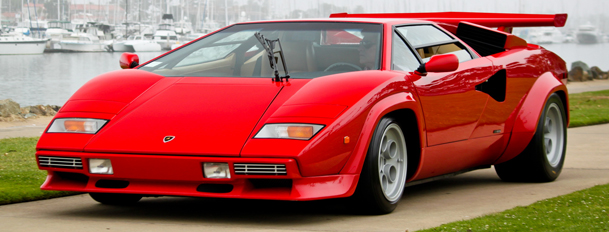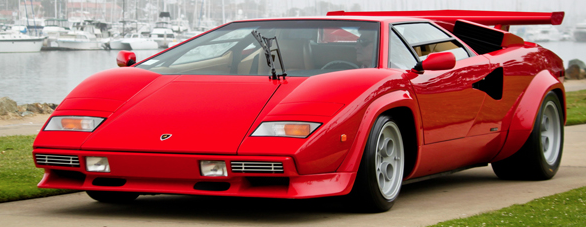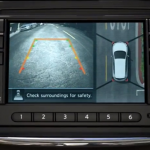
I wrote recently about a trio of guys who were known to their acquaintances for weaving tall automotive tales. Those guys were, frankly, liars. No factory-stock Monte Carlo ever hit 200 mph, and the government never developed a secret performance chip for the Dodge Neon. We know this.
But, there’s another breed of automotive misinformation, one bred of a better-natured, albeit more gullible origin. These aren’t lies per se, but they are still horse pucky. And the guys who spread these non-truths aren’t ill-intentioned, just really bad at sifting through fiction to locate fact. I am talking about guys who just say stuff they heard someplace, and just pass along that information because, well, “How about that?”
The “Betcha Dint Know” guys aren’t bragging. Their biggest sin is needing to be the purveyor of some startling nugget of information. The funny thing is, correcting these guys is pointless. They do not want to hear that their conversation starter is untrue, and they have no intention of not sharing it again—and again.
I am willing to bet that at least half the people who read this blog post know someone still spreading the whole Chevrolet Nova “no go” story. If you don’t know it, check it out on Snopes.
So, here are three bits of automotive fiction that aren’t exactly lies but are, well, fiction.
Of “Rice Burners” and “Jap Crap”: An Open Letter to Idiots
The 300-mph Lamborghini Countach
If you became a male teen in the late 1970s, and you had two posters on the walls of your bedroom, odds are that one was of Farrah Fawcett and the other of a Lamborghini Countach. I did know one guy who had a Porsche 928 poster in his room, but he also collected parakeets and was largely regarded as strange.
Like Farrah, the Lamborghini’s appeal was largely hormonal. Most guys with even a passing interest in cars could identify a Countach at 100 yards, yet they likely couldn’t distinguish between a Malibu and a Torino at 30 paces. To its credit, the Countach wore its mighty rear spoiler and crazy fender flares almost as well as Farrah wore a swimsuit—and unlike Farrah, Countach sightings in real life were only very rare, not complete fantasy.
What was fantasy were the incredible performance statistics assigned to the Countach. Guys who had never cracked open a copy of Motor Trend knew, quite certainly, that the car was capable of traveling 300 mph. It seems now that I spent roughly 5 percent of my waking hours between 1980 and 1990 attempting to dispel the myth of the 300-mph Lamborghini Countach.
I broke one guy’s heart, and he never forgave me for it. “Ken,” a coworker at a market-research firm I worked at, not only believed the 300-mph bit, he believed that the secret to the Countach’s high-speed prowess was its rear spoiler. When I shared with him a 1983 Car and Driver test of the Countach, in which the car actually reached a higher speed (160 mph) with the rear spoiler removed, you’d think I’d just told him that Farrah had used a body double for the swimsuit poster shoot. Our relationship was never the same after that.
The $14,000 Lamborghini Countach
For as long as I’ve been listening to car chatter, I’ve been hearing tales of people who scored better deals on car purchases by “paying cash.” I can tell you with great certainty that this is not the case, and it has not been the case since I first (and last) sold cars in 1991. The simple fact is, dealers make a commission on finance deals. So, in theory at least, you should be able to get a better price on a new ride by promising to obtain a loan through the dealer—not by paying cash.
Still, there are guys out there (again, never women) who like to fantasize about plunking down a big bag of cash and subsequently driving away in a deeply discounted vehicle. “Rob” was just such a guy. Rob was a good mechanic, and a nice guy, but he had some pretty funny ideas about how certain things worked. Additionally, bubbling just under the surface was Rob’s mild disdain for anyone with more money than he had. That disdain boiled over the day a Lamborghini Countach showed up for gas at the service station that Rob and I worked at.
This would have been around 1983 or so. The most exotic vehicles we saw were the occasional Jaguar XJ6 and Mercedes-Benz S-Class. But Countachs? Never. Several of us, including Rob, dropped what we were doing to observe the fabulous red monster fuel up. Rob was the first to speak. “Salami (my actual nickname in those days), how much does one of those cost?” “About $100,000,” I answered. “Rich a** h***,” Rob muttered, walking back to the car he was working on.
After a couple minutes of silence, Rob started talking about the Countach. He muttered a bit about idiots who pay that much for cars, whined a wee about how cars that expensive didn’t really offer anything that a Trans Am or Z/28 didn’t, and decided pretty quickly that new a Countach was a distinctly foolish purchase. Then came this:
“You know what would freak them out? If I went into that dealership with $14,000 in cash. That would freak them out. Their eyes would pop out. I bet they’ve never seen that much cash in one place.”
The other mechanics nodded in assent, none bothering to question aloud the roughly $86,000 gap between the list price of the car and the cash in Rob’s imaginary gym bag.
I have since theorized that Rob actually had $14,000 someplace—hopefully a bank—and that it did him good to imagine that piling it all up in one place somehow made it more impressive, even impressive enough to score a new Lambo.
The 50-mpg Volkswagen Beetle
I completely appreciate the Volkswagen Beetle. I appreciate what the “Bug” was to VW. I get how owners benefitted from the low cost of ownership. I have little doubt that well-maintained versions commonly saw the far side of 200,000 miles.
I also know that Beetles were nothing special to drive, loud as hell on the highway, and not especially easy on gas—at least not as easy as one might expect a car that slow to be. Anecdotal evidence (I called a few people I know who owned ’70s Bugs) suggests that in normal driving, Volkswagen’s air-cooled wonder was good for about 25 mpg. That figure jibes nicely with the 24.5 mpg Consumer Guide saw evaluating a 1974 Beetle with manual transmission.
So, we have an affordable, reliable, reasonably frugal car here. So why the BS? Who knows? But I hear it to this day.
As a kid, it was common in the summer to hit the local Dairy Queen with a group of neighborhood kids. One kid’s dad was, for some unknown reason, usually our chauffeur. At the DQ, we almost always saw a black Beetle parked in the lot; it must have been an employee’s. And as kids, we waited anxiously for a first glimpse of that car so that we could let fly with the obligatory—and unnecessarily violent—punch-Bug wallop.
Mr. B. always seemed ignorant of the Bug-punching carnage in his back seat, but he never, ever, failed to note, “You know, those things get 50 miles to the gallon.”
I had forgotten Mr. B. and his VW mileage claims until this past week, when I was admiring a pristinely restored Beetle parked in a local grocery store parking lot. While I was peeking through the window, a fellow admirer came up to the car and noted, “You know, these things get 50 miles to the gallon.”
I made no effort to expose the myth. We chatted briefly about how well restored the car was and went our separate ways. But, if I were a betting man, I’d bet that guy tells at least three more people about Beetle fuel economy before year’s end.



